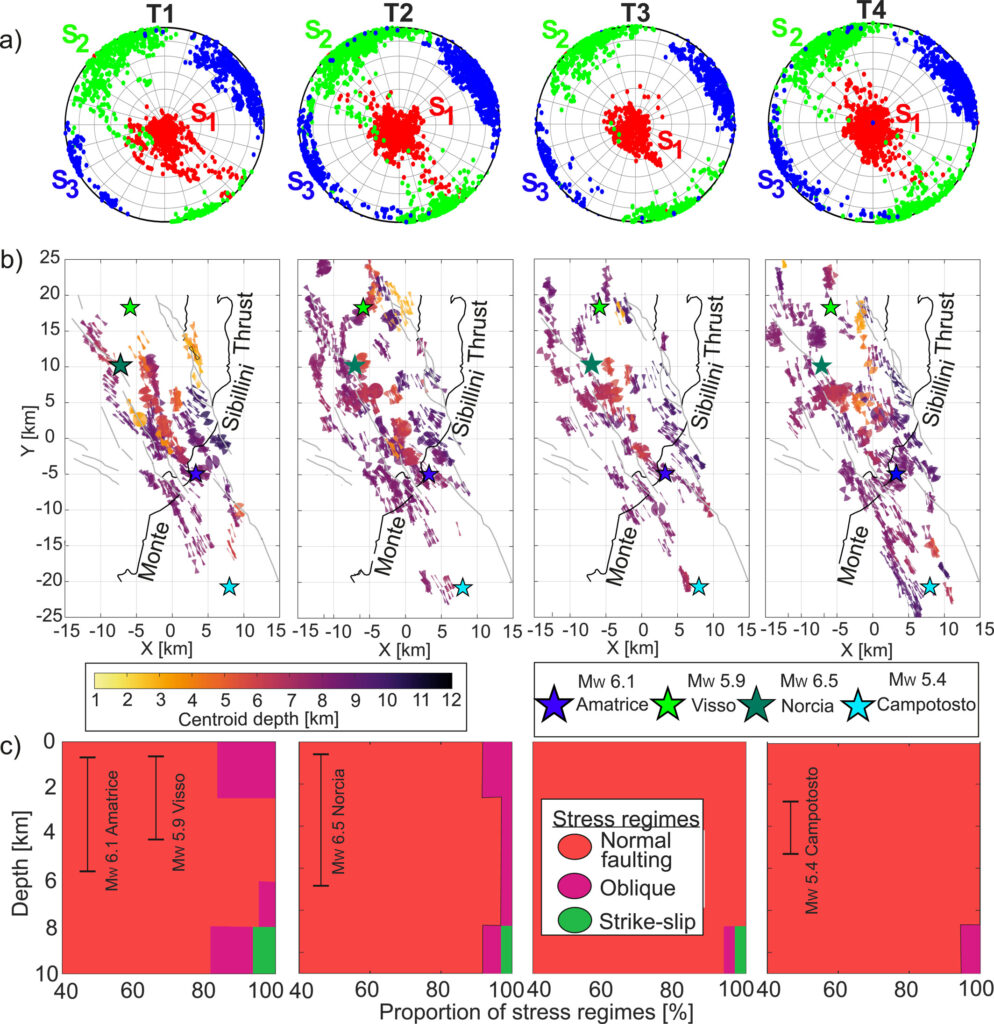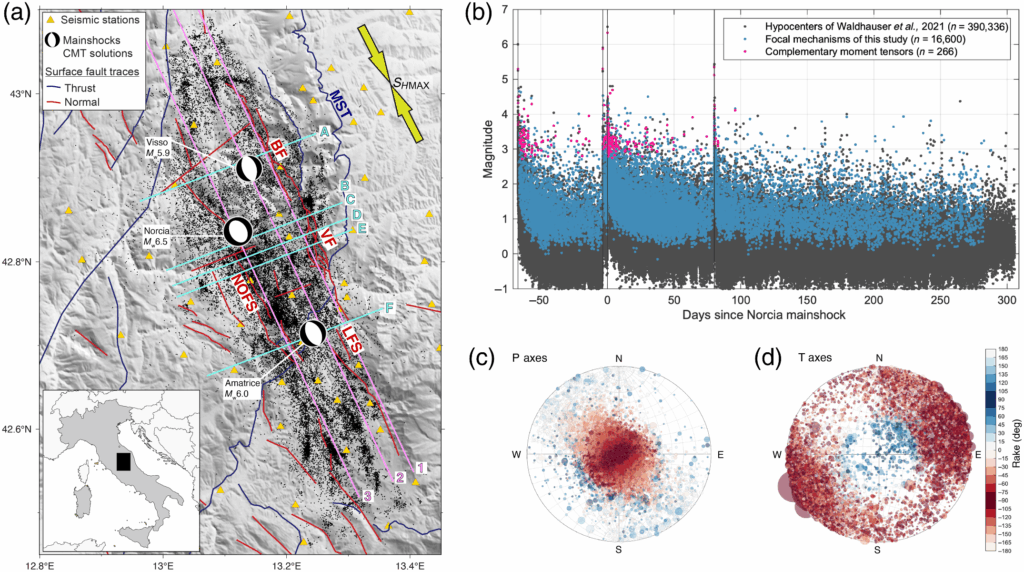Extensional tectonics
We analyze the evolution of stress parameters from the 2016–2017 central Italy seismic sequence taking advantage of ∼13,747 robust focal mechanisms from a deep learning catalog. The density of the catalog allows us to invert focal mechanisms over distances of a few km and different time periods. We inferred a number of stress-related parameters, including the fault plane variability, the orientation of principal stress axes and maximum horizontal stress, the relative magnitudes of principal stresses and the variability of the principal stress orientations with respect to the median. From the uniform regional stress field consistent with the extension of the Apennine Belt, we observe local stress heterogeneities that are driven by the structural features and the coseismic stress history. A variation of the principal stress magnitudes and regimes from pure normal faulting toward transtension with depth is observed. Stress differences at the 1–10 km wavelength are observed between each side of two of the main regional fault structures. The reported stress results suggest a partial mechanical coupling and a strong interaction between the shallow normal faults and the detachment horizon at depth. Furthermore, distinct trends are observed in the stress parameters after the largest mainshocks, and before the MW 6.5 Norcia mainshock, potentially indicating the high shear stress still available in well oriented faults after the MW 6.0 Amatrice earthquake. Our analysis holds implications toward (a) constraining stress magnitudes, (b) illuminating the interaction between the shallow normal faults and detachment horizons, and (c) tracking stress evolution during seismic sequence.

GO TO PUBLICATION
